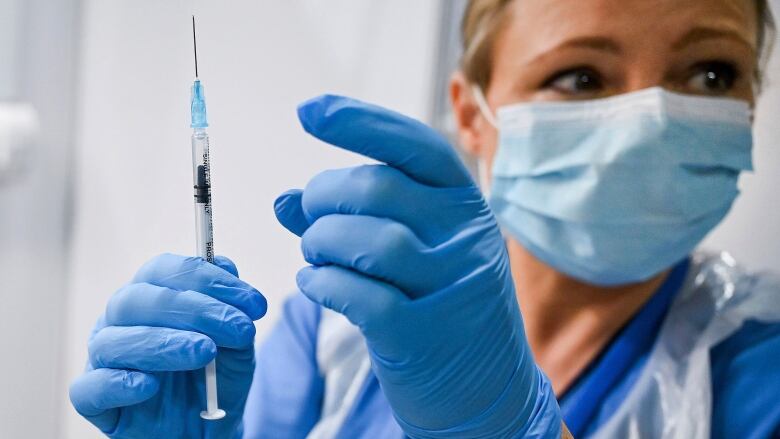COVID-19 vaccine coming soon but plenty of challenges in distributing it in N.W.T.
Territory's medical director say N.W.T. used to dealing with getting supply to remote areas

Vaccinating 75 per cent of people aged 18 and over in the Northwest Territories against COVID-19 will likely offer the population a high level of protection says the territory's medical director, but she warns that it's an ambitious goal that's "going to be a lot of work."
Dr. AnneMarie Pegg said planning to distribute the Moderna COVID-19 vaccine to remote communities in the territory is already underway.
"There have been lots of meetings between the public health department, between the health authority, starting to speak to communities," she said.

N.W.T. Minister of Health Julie Green said during a news conference last Friday that the territory is expecting to receive around 51,000 doses of the Moderna vaccine during the first three months of 2021.
It is enough to vaccinate 75 per cent of the territory's residents, 18 and over.
"We're still not 100 per cent sure exactly how that's going to be delivered and in what quantity," said Pegg, who has a lot of experience getting vaccines and information to people in remote communities after spending 12 years with Doctors Without Borders.
She said the scale of the effort to distribute the vaccine across the territory is unprecedented, especially when compared to annual flu vaccination programs in which about 18 per cent of the eligible population receive a vaccine.
However, she said the territory is used to dealing with vast distances between communities and getting supplies delivered to remote areas.
Biggest challenge
She said the N.W.T.'s biggest challenge will be to get information into the communities before the vaccine is delivered.
"People already have a lot of questions about this vaccine," she said. "There's going to be questions that we need to answer about the vaccine itself, but also about how it's going to roll out."
She said it's important that health officials be able to answer the majority of the questions and to have a good campaign that delivers the information to all the communities.
"That communication ... is going to be important," she said. "These are all things that we don't know yet because we don't know how much vaccine we're going to get exactly at what time."
Keep up public health measures
Pegg said it's important to remember the vaccine is still months away.
"And so all of the things that we're doing right now to keep our communities and ourselves safe needs to continue," she said.
She said physical distancing, good handwashing hygiene and mask-wearing needs to continue, even after the rollout of the vaccine starts because "it's going to take time to have an idea of the level of protection that we get from that vaccine."
Facing vaccine hesitancy
She said it will also be important to listen to people who are hesitant to get the vaccine.
She said there are many reasons people are reluctant to get vaccinated. It could be that they or someone they know had an adverse reaction to a vaccine, or that there's a lack of trust in the institutions that deliver the vaccines and information about them.
She said some people are also wary of new things, and the vaccine is a new product.
"We're going to have to do a lot of communication regarding how this [vaccine] has been determined to be safe," she said. "What experts have reviewed the vaccine, what the technology actually means, why this vaccine is safe for northerners. And so it's going to be communication on a number of levels."
With files from Kate Kyle and Loren McGinnis